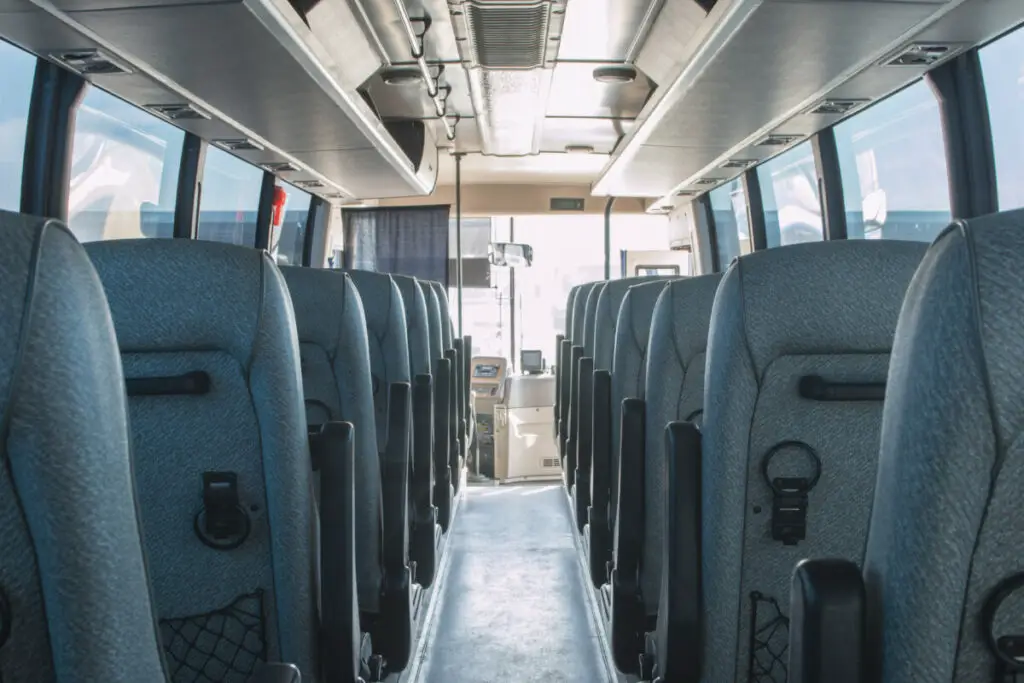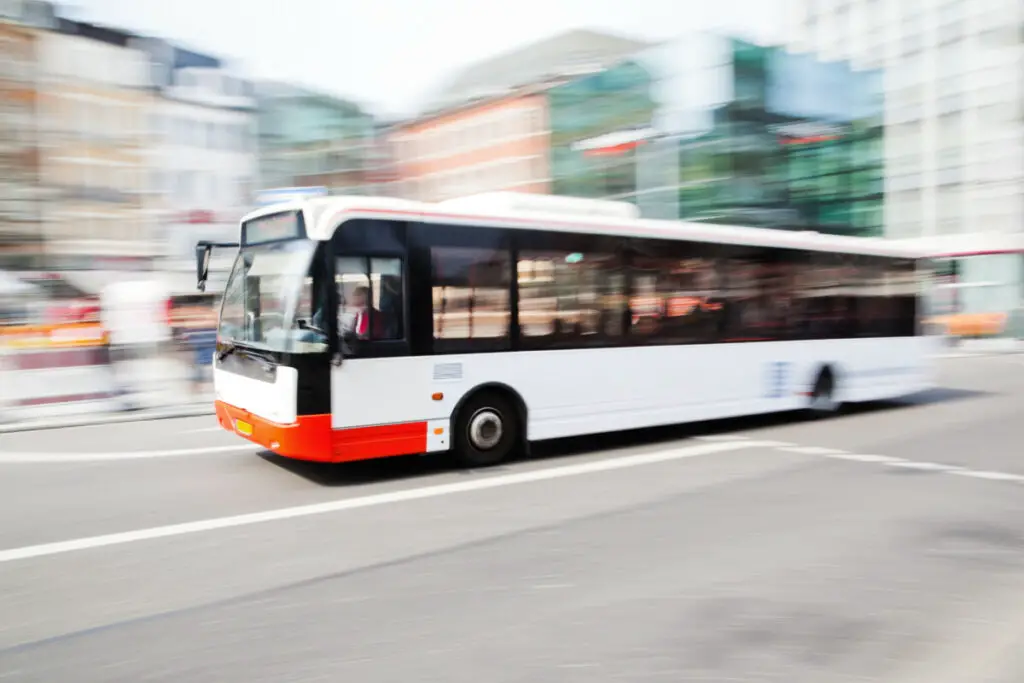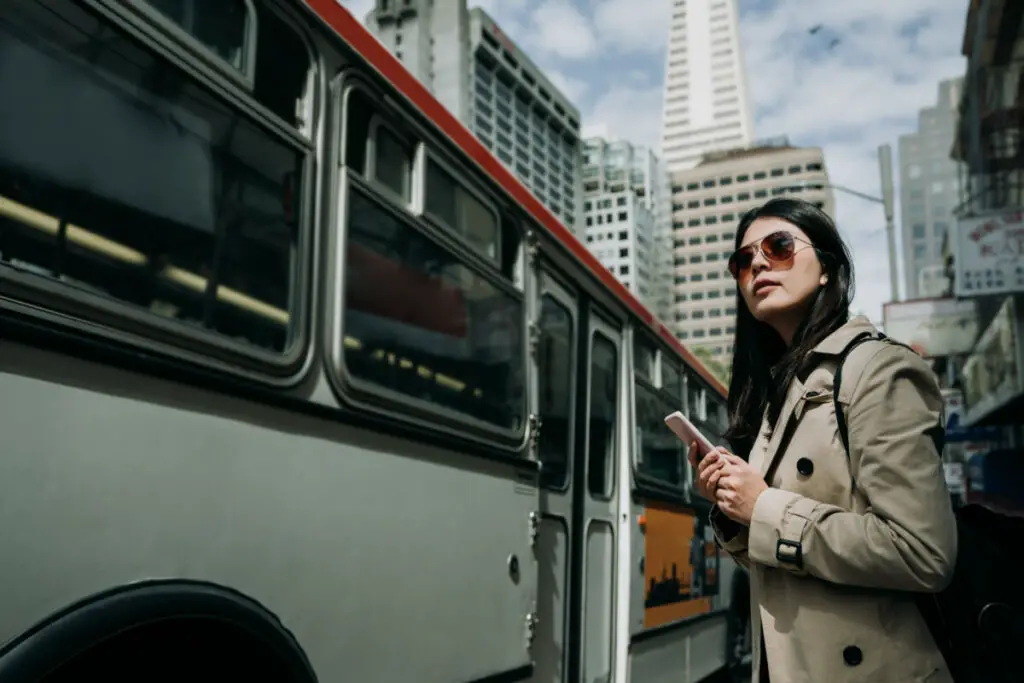
Getting around a big place like San Antonio isn’t easy. Thankfully, there are public transportation options available to both citizens and visitors of the historic city.
There is public transportation in San Antonio, Texas. Its public transportation system is called VIA Metropolitan Transit and is the only city-wide bus system that San Antonio offers. Other public transportation is available through BCycle and the Gray Line.
With only one large public transportation system for a city as populated as San Antonio, there are sure to be some shortcomings in its functionality. Currently, San Antonio is working towards making its public transportation more efficient for its citizens. In the meantime, knowing how to navigate the current transportation can help everyone to make the most of all the city has to offer!
VIA Metropolitan Transit
VIA is the only bus system that is offered to the general public in San Antonio, Texas. While it’s not the most popular option among residents, it is still a key source of transport for those that use public services. VIA offers a variety of bus services, including Primo, Express, Late Night, and Downtown.
Primo is a fast and comfortable service that goes to downtown San Antonio. It has 3 routes, which are Primo 100, 102, and 103. Each service runs daily from 4 am to 1 am, with only slight variations in timing.
is a fast and comfortable service that goes to downtown San Antonio. It has 3 routes, which are Primo 100, 102, and 103. Each service runs daily from 4 am to 1 am, with only slight variations in timing.
Primo 100 travels from Centro Plaza, which is located centrally in San Antonio, to the Medical Center Transit Station out near Leon Valley. It runs every 10 minutes on weekdays and every 15 minutes on weekends.
Primo 102 travels from a station near the Lackland Air Force Base, through central San Antonio, to Brooks City Base. It runs every 12 minutes on weekdays and every 15 minutes on weekends.
Primo 103 travels from a station in Balcones Heights to a station in Southern San Antonio. The times that it runs are slightly different from the other two. Like Primo 102, the 103 service runs every 12 minutes on weekdays and every 15 on weekends. However, on Saturdays, the Primo 103 bus is only available from 4:30 am to 1 am, and on Sundays, it is only available from 5:30 am to 1 am.
The Primo bus services, along with providing fast and frequent buses, also feature Wi-Fi and updated arrival information along the route. Additionally, the buses provide space for bikes and wheelchair self-restraint, but only on 60-foot buses. More specifically for bike riders, the 60-foot buses can hold up to three bikes, and the shorter buses (40 feet) have bike racks on the front of the buses.

The Express bus, in a similar fashion to Primo, is meant to help riders arrive at their destination quicker. While Primo will make a few stops along the route, Express is a non-stop service to Downton San Antonio. People can access the bus routes at 6 different station locations around the city.
bus, in a similar fashion to Primo, is meant to help riders arrive at their destination quicker. While Primo will make a few stops along the route, Express is a non-stop service to Downton San Antonio. People can access the bus routes at 6 different station locations around the city.
There are two Route 7s through VIA Express. Both are Monday through Friday routes that run every 30 minutes from about 5:30 am to 7:30 pm each day. One leaves from the Brooks Transit Center, and the other leaves from the Stone Oak Park & Ride Station.
Route 17 leaves from the Randolph Park and Ride Station. It runs every 30 minutes from 4:25 am to about 10 pm.
Route 64 leaves from the Kel-Lac Transit Center and runs from approximately 5:15 am to Midnight.
There are two Route 93s. They run every 30 minutes from 6:15 am to 11:30 pm. One leaves from the Crossroads Park & Ride Station, and the other leaves from the University Park and Ride Station.
The Express also boasts reclining seats, overhead storage, reading lights, and fast Wi-Fi.
Late Night travel services are provided hourly starting at 10:30 pm until 12:30 am. Buses line up at select locations in Downtown San Antonio, where they wait for all riders to board the correct buses before leaving. For those wanting to use Primo 100 services at night, they will be available after the late night lineups, as their services run until 1 am.
starting at 10:30 pm until 12:30 am. Buses line up at select locations in Downtown San Antonio, where they wait for all riders to board the correct buses before leaving. For those wanting to use Primo 100 services at night, they will be available after the late night lineups, as their services run until 1 am.
VIA Link is a ridesharing service that is currently available to the Northeast and Northwest areas of San Antonio. One trip can take up to three people. The rides can be booked through the VIA Link app. The service can be used to connect to bus stations in the area.
With VIA, there are several options for ticket prices that range from annual to tickets for just one bus ride. Some services differ in pricing; while Express is more expensive, Primo services cost the same as regular bus services.
| General Fares | Express | Primo |
| Daily: $2.75 | One Ride: $2.60 | One Ride: $1.30 |
| Monthly: $38 | —- | —- |
| Annual: $365 | —- | —- |
The prices for the general fares are applicable to all regular Express, Primo, and VIA Link services. Discounts on each service are available for kids of the ages 5-13, seniors over 62, riders who are disabled, students, and active military personnel.
Other Transportation Options
Other transportation options are available, even if they may not be as convenient due to a lack of access for pedestrian travel. San Antonio offers bike rentals through BCycle ; these bikes can be rented daily, monthly, or annually. They are also not reserved for residents of San Antonio, as both residents and visitors can use the bikes to make their way around the city. The bikes are available to ride for an hour at a time and must be docked at BCycle stations. Additionally, the stations are open daily from 6 am to 11 pm.
; these bikes can be rented daily, monthly, or annually. They are also not reserved for residents of San Antonio, as both residents and visitors can use the bikes to make their way around the city. The bikes are available to ride for an hour at a time and must be docked at BCycle stations. Additionally, the stations are open daily from 6 am to 11 pm.
The BCycle app makes navigating the bikes around the city easy. First, it allows the bike users to locate bike stations, as well as find the most bike-safe streets and paths. Users can also track their trips and use the map within as a guide to use their best routes.
Because of the many historic aspects of San Antonio, the city has also provided a specific bus system for tourists called the Gray Line . The Gray Line provides 8 standard tours around the city and offers customers the opportunity to customize their tour.
. The Gray Line provides 8 standard tours around the city and offers customers the opportunity to customize their tour.
This unique system has tours that range in price from $65 to $109. The buses can be booked from 9 am to 5 pm and allow tourists to see historic sights, and iconic locations, and taste the best local food and drinks!
While the Gray Line might not be used in the typical fashion of public transportation, its existence shows that San Antonio is eager to make its history accessible to all wanting to learn more.

Where Public Transportation Falls Short in San Antonio
San Antonio provides public transportation, however, many people find the well-intentioned services to be unsatisfactory. In a city as big as San Antonio, people feel that more can and should be done to help people get around town.
VIA lacks efficiency in how broadly it serves the community. One San Antonio resident that I talked to, in opposition to those proposing a train service, stated that “more widespread and frequent bus routes are the better, and cheaper, strategy.”
Indeed, San Antonio is a sprawling city, and while its bus system may work for some, it is limited in where it’s able to get people to go.
Currently, the system mainly focuses on getting people downtown as a sort of commute service. VIA lacks smaller routes that connect people to places around the outer parts of San Antonio. Creating greater variety through VIA would make it a more accessible and useful service to the San Antonio community.
Another common complaint about why VIA can’t seem to provide the service it wants to is because funding hasn’t been sufficient. Both the funding and the available transit may change soon, because as of this year, VIA may be able to receive over half of the funds they need to expand its services through federal funding. The new system would provide rapid transit buses that run North and South routes through San Antonio.
The pedestrian experience is also lacking in San Antonio. In a city that has consistently been designed for car travel , San Antonio has built over 100 miles of trails for walkers to enjoy. The issue with nature trails is that they don’t get anyone to the doctor’s office. Generally, in places where car travel is prioritized, things tend to be more spread out, so even if sidewalks were built everywhere and kept in great condition, it would still be difficult to justify walking to your next destination because of how long it would take.
, San Antonio has built over 100 miles of trails for walkers to enjoy. The issue with nature trails is that they don’t get anyone to the doctor’s office. Generally, in places where car travel is prioritized, things tend to be more spread out, so even if sidewalks were built everywhere and kept in great condition, it would still be difficult to justify walking to your next destination because of how long it would take.

While San Antonio’s streets aren’t currently accommodating of bikers and pedestrians, the city does have plans to change this. It is working towards creating better sidewalks, as well as gaining recent funding for establishing better bike lanes throughout the city. Currently, the goal is to create better bike lanes and expand existing bike trails.
for establishing better bike lanes throughout the city. Currently, the goal is to create better bike lanes and expand existing bike trails.
While people want better for San Antonio’s pedestrian and public transportation community, not everyone trusts the city to succeed where it has failed in the past. Hopefully, the city can provide the necessary transportation for its ever-growing community.
Related Topics:
If you like the article above, here are some other similar articles you should check out!
17 Reasons Not to Move to San Antonio, Texas
